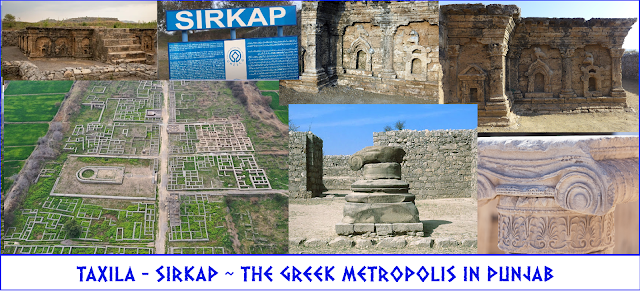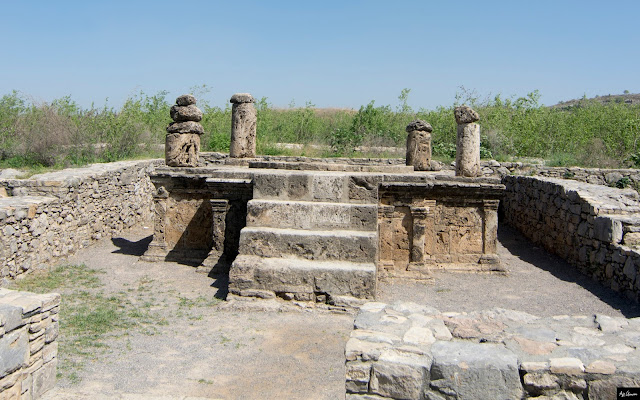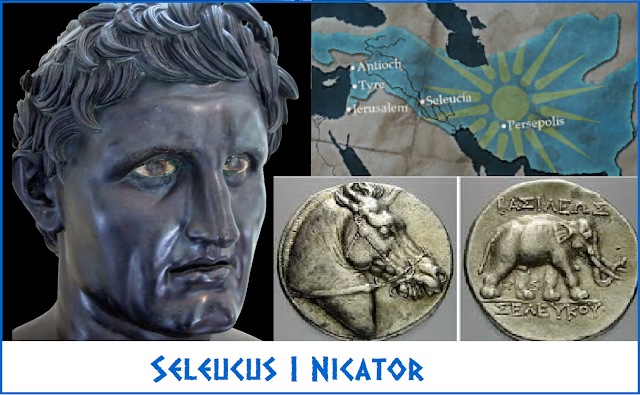Cleophis (Sanskrit: Kripa) was an Assacani queen and key figure in the war between the Assacani people and Alexander the Great. Cleophis was the mother of Assacanus, the Assacanis' war-leader at the time of Alexander's invasion in 326 BCE. After her son's death in battle, Cleophis assumed command and negotiated a settlement that allowed her to retain her status. Later accounts claim Cleophis had a son by Alexander, a notion dismissed by historians.
The Assacani (called Ashvakas in Sanskrit, from the word Ashva, meaning "horse") were an independent people who lived in parts of the Swat and Buner valleys in ancient Gandhara. These highlanders were rebellious, fiercely independent clans who resisted subjugation.
in the Major Rock Edicts of Ashoka, Asvakas are described as Gandhāras (Gandharians), who are recorded separately from Kambojas. Ancient Greek historians who documented the exploits of Alexander the Great referring to the Aspasioi and Assakenoi (Ἀσσακηνοί) tribes among his opponents. The historian RC Majumdar considers these words to be corruptions of Asvaka. It is possible that the corruption of the names occurred due to regional differences in pronunciation. Rama Shankar Tripathi thinks it possible that the Assakenoi were either allied to or a branch of the Aspasioi. The Greeks recorded the two groups as inhabiting different areas, with the Aspasioi in either the Alishang or Kunar Valley and the Assakenoi in the Swat Valley.
Alexander's war with the Assacani
In 326 BCE, Alexander's campaigns west of the Indus River brought him into conflict with the Assacani. In defense of their homeland, they assembled an army of 20,000 cavalry, 38,000 infantry, and 30 elephants, according to classical writer Quintus Curtius Rufus. Their army included a contingent of 7,000 Kamboj mercenaries recruited from Abhisara.
After being defeated in the field, the Assacani fell back to the fortified city of Massaga, where the fighting continued for five days (or nine days, according to Curtius.) It was during this battle that Assacanus was killed. After her son's death, Cleophis assumed command, mustered the Assacani women to fight, and led the continued defense of the city. Rule of the Assacani fell to Cleophis.
Eventually, however, Cleophis judged that defeat was inevitable. She came to terms with the invaders and abandoned Massaga with her followers. Diodorus Siculus says: "Cleophis sent precious gifts to Alexander with a message in which she expressed her appreciation of Alexander's greatness and assured him that she would comply with the terms of the treaty." According to Curtius and Arrian, Cleophis was captured along with her young granddaughter. Alexander allowed Queen Cleophis to maintain her throne as his vassal.
Alexander's retaliation against the defeated Assaceni was severe. He had Massaga burned. Victor Hansen writes: "After promising the surrounded Assaceni their lives upon capitulation, he executed all their soldiers who had surrendered. Their strongholds at Ora and Aornus, were also similarly stormed. Garrisons were probably all slaughtered."
Additionally, Alexander pursued the Kamboj mercenaries, surrounded them on a hill, and killed them all. Diodorus describes the event in detail: "...The women, taking up the arms of the fallen, fought side by side with their men. Accordingly, some who had supplied themselves with arms did their best to cover their husbands with their shields, while others, who were without arms, did much to impede the enemy by shooting themselves upon them and catching hold of their shields."
Later classical writers, including Curtius and Justin, claim that Alexander fathered a child with Cleophis. Historians dismiss this notion as a much later romantic invention. On Alexander's relatively generous terms, which allowed Cleophis to retain her status, Curtius says, "...some believed that this indulgent treatment was granted rather to the charms of her person than to pity for her misfortunes. At all events, afterwards she gave birth to a son who received the name Alexander whoever his father may have been..." Earlier writers do not mention this.
The Asvayanas have been attested to be good cattle breeders and agriculturists by classical writers. Arrian said that, during the time of Alexander, there were a large number of bullocks - 230,000 - of a size and shape superior to what the Macedonians had known, which Alexander captured from them and decided to send to Macedonia for agriculture.
Edited from Wikipedia

























.png)


































